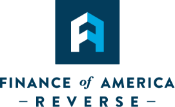Pray for the Dead, Fight and fight like hell for the Living
Mary Harris “Mother” Jones
I learned about “Mother” Jones during the summer before I first taught labor history at Indiana University Northwest. I was an Assistant Professor of Labor Studies, working in a program that provided both credit and non-credit courses aimed at union members. I taught credit courses on campus and non-credit courses in area union halls. Anyway, I was assigned to teach labor history fall term, 1983 (whew, time flies). Like many union members who had developed an interest in the history of the labor movement, I’d heard of “Mother” Jones, the union organizer. Still, I didn’t know much about her. I learned quite a lot more while preparing the class. In sum, she had a remarkably full life, but her career after age 62 was genuinely notable.
A little background on her earlier life: she was married to a union organizer for the Molders Union, a new labor organization made up of foundry workers and ironworkers (it still exists). She had a dressmaking shop, first in Chicago and then in Memphis. When her husband and four children died of yellow fever during an epidemic in 1867, she returned to Chicago, where she operated a dressmaking business until her shop burned down during the Great Chicago fire of 1871. Shortly after that, she began her “encore” career as an organizer.
Although she began organizing well before her 62nd birthday, her work was powerful (at least to me, the retired union representative). These are the “highlights,” keep in mind she organized each day, every day:
- In 1901, she was organizing during a strike in the silk mills in Pennsylvania. One of the significant issues was the use of young girls doing adult work without being paid adult wages. This kindled her concern about child labor and how mill owners ignored the laws that were in place at the time (there were no national child labor laws back then). In 1903, during another strike involving child workers, she tried to get newspaper coverage of how the children were being exploited. The same people with business interests in the mill owned the paper and said they couldn’t publicize the children’s plight. She decided she needed to make some publicity of her own. She organized the “Children’s Crusade,” a march of children who worked in mines and mills from Philadelphia to President Theodore Roosevelt’s home in New York. Although they never got to see the president, they did get their publicity.
- In 1902, during a trial in which she was prosecuted for violating an injunction preventing striking miners from meeting, a West Virginia District Attorney called her “the most dangerous woman in America.”
- In 1905, several organizers and unionists (including Eugene Debs, the great labor leader who almost a million votes for president in 1912 while he was in prison for opposing US involvement in World War I ) banded together to form the International Workers of the World, the IWW, or the “Wobblies,” the most militant labor organization in our history. Mother Jones was one of the founding members.
- In 1907, on the US Senate floor, she was called “the grandmother of all agitators”; when she learned of this, she replied, “I hope to be someday known as the great grandmother of all agitators.”
- “Mother” was jailed for 85 days in 1912. This was during the Cabin Creek coal strike (pretty famous among labor historians). The strike gave rise to a shooting war between the mineworkers union and the mine owners’ private army. As a result, martial law was imposed on the area. Jones was arrested and court-martialed, for among other charges, conspiracy to commit murder. She was initially sentenced to 20 years in the state pen.
- She was part of the Colorado Coalfield War in 1913 and 1914. The strike was long and bitter, and once again, she was jailed and eventually escorted from the state. She returned the next year right after the Ludlow Massacre, which took place as a result of a strike against a Rockefeller owned mine. The miners and their families lived in a tent city during the strike (they had been evicted from the company owned housing after they went on strike). The Colorado National Guard and company guards attacked the tent city, murdering 21 miners, women, and children. In the aftermath, Mother came to Ludlow and eventually met with Rockefeller, which was the first step in the implementation of reforms for which the miners were striking (in addition to wages).
- Her autobiography was published in 1925 (and it’s available on Amazon, and likely other places).
- She continued to organize with the United Mine Workers and speak about the conditions faced by working families until she died in 1930.
Mother Jones’ legacy is exemplified by the “Daughters of Mother Jones,” the wives and daughters of the striking miners in the 1989-1990 Pittston Coal strike in Kentucky and West Virginia. The group played a crucial role in the picket line and doing press and publicity for the miners. Carl Sandburg, the iconic poet, claimed that “She’ll Be Coming ‘Round the Mountain” is Mother Jones. Songs, plays, and novels were written about her. And so much of it this legacy is based on what she did after age 62.
– Edward from McMinnville, Oregon, a FAR customer who is finding purpose in this new stage of his life.

Edward
Edward writes for FAR and is also a customer. He is 73-year-old, born and raised in and around New York City. After college and a little graduate school, he took Horace Greeley’s advice and went west. Edward lived in several cities throughout California and currently resides in Oregon. He practiced law for a few years as part of a law collective doing what they called “people’s law,” but spent most of his career working as an internal organizer for the unions.
When Edward’s career ended with the unions, he was determined to become an advocate for older adults. He enrolled at Portland Community College studying Gerontology. He learned a lot about aging and how it applied to his own life experiences and my own aging process. Much of Edward’s writing is related to what he learned in his Gerontology studies.
* The opinions expressed in this article are those of the authors. They do not necessarily reflect the opinions or views of the Finance of America Reverse (FAR) LLC
This article is intended for general informational and educational purposes only, and should not be construed as financial or tax advice. For more information about whether a reverse mortgage may be right for you, you should consult an independent financial advisor. For tax advice, please consult a tax professional.















I WANT TO KEEP UP TO DATE ON RETIREMENT TRENDS
Follow Us.